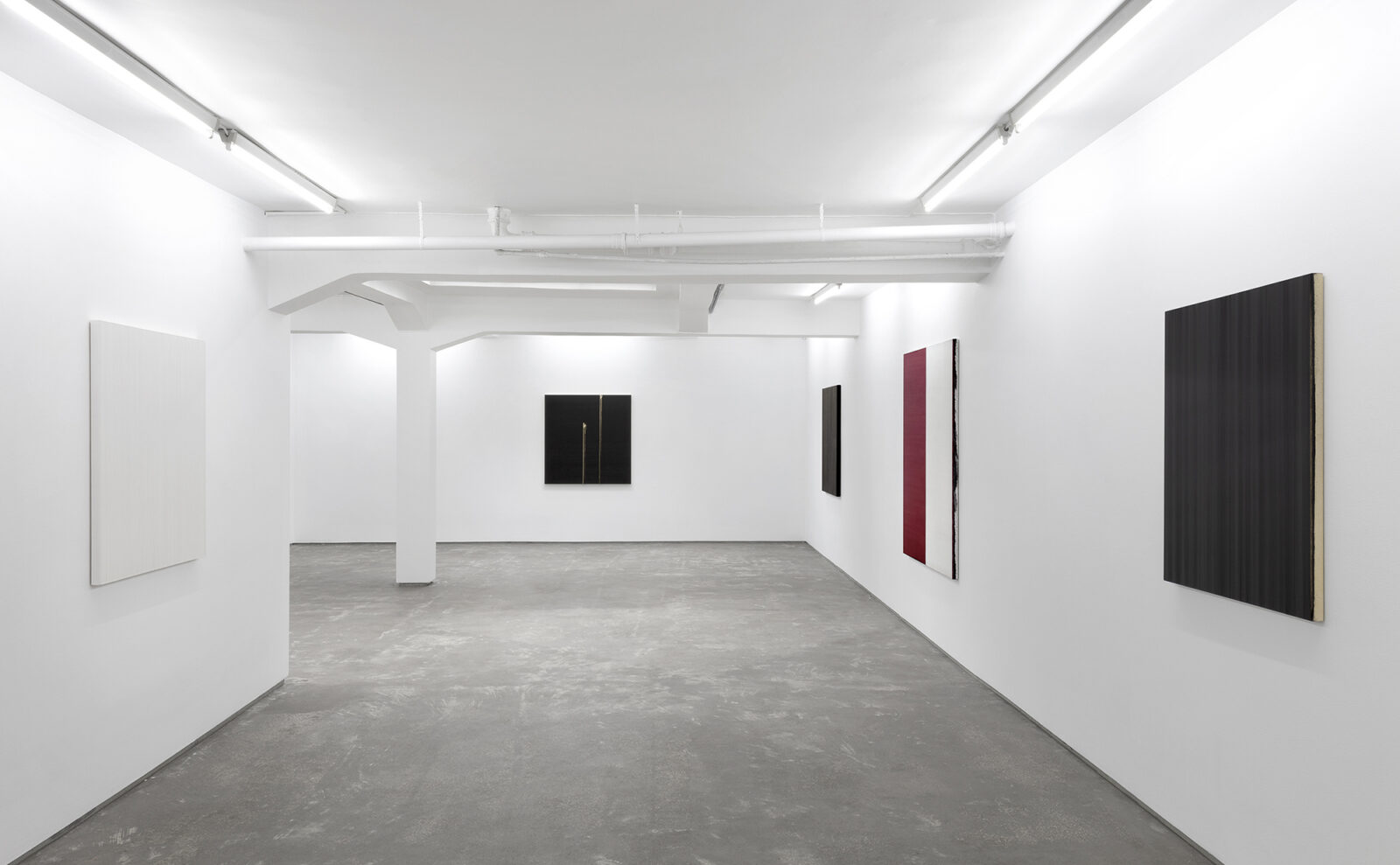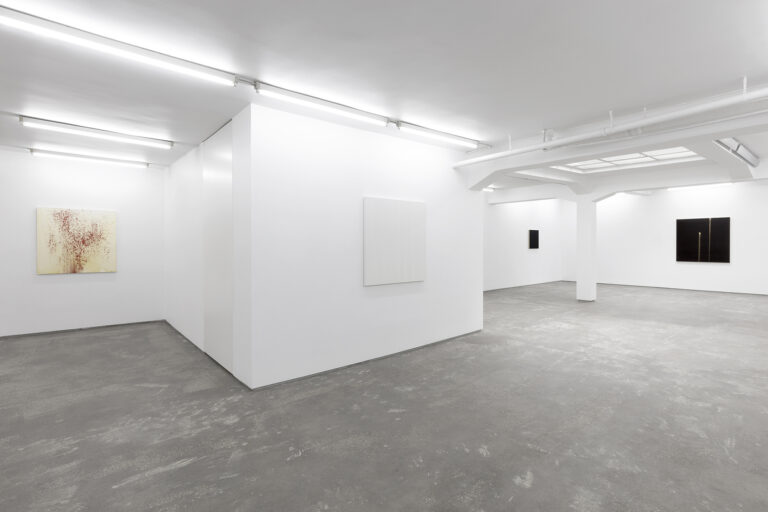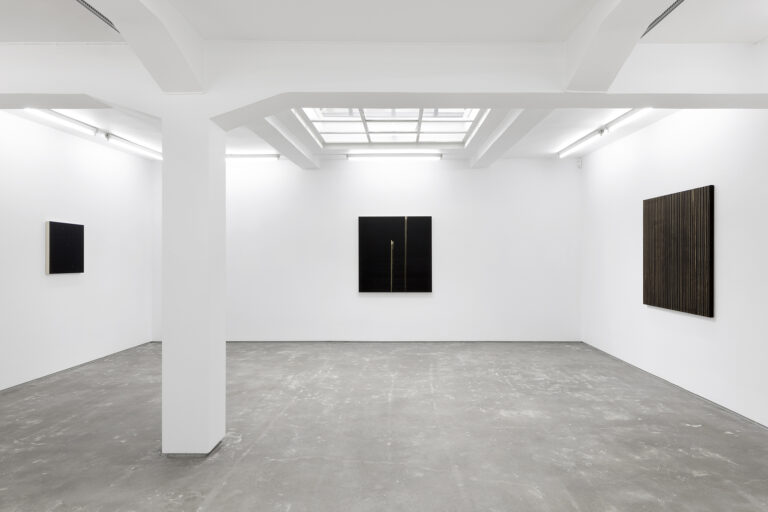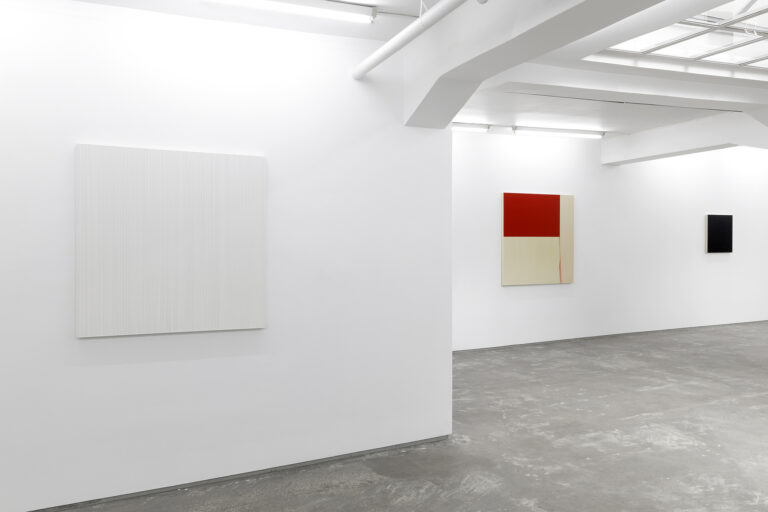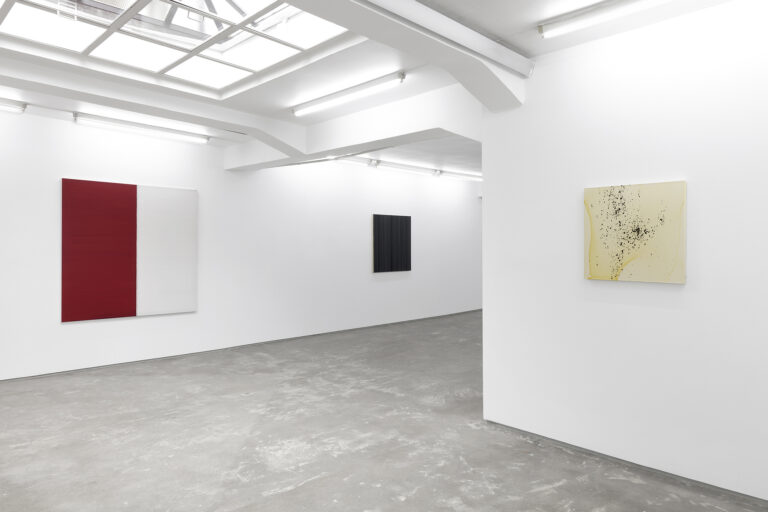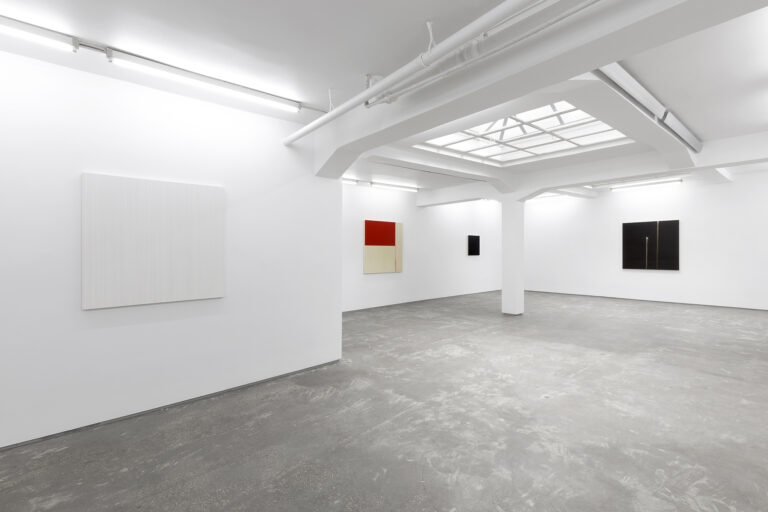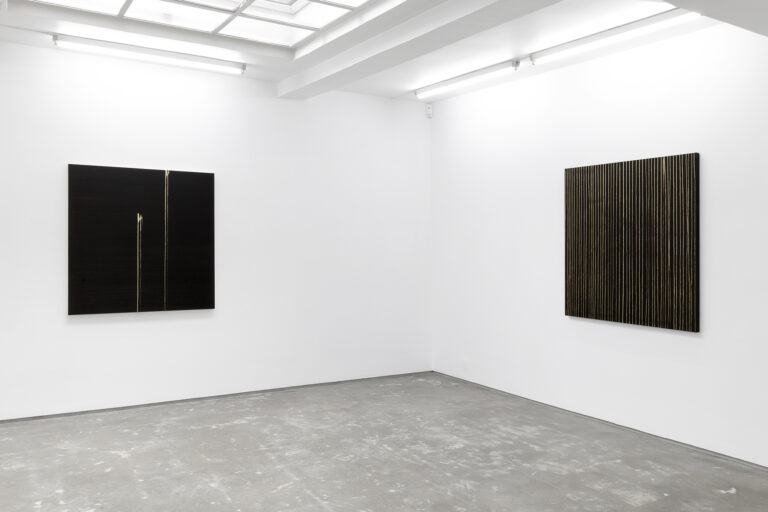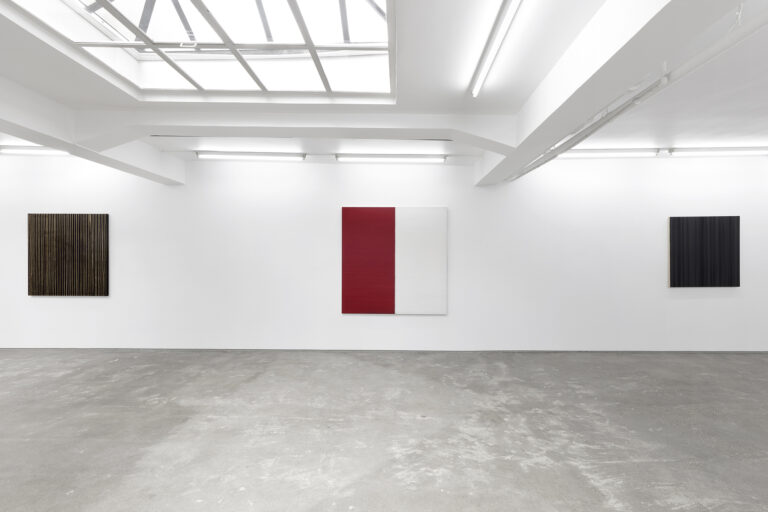Exhibition opening 25.04.2024, 18-20:00
Present Perfect
A construction formed by a present tense form of the perfect auxiliary ‘have’ + a past participle, regarded by some grammarians as an aspect, but by others as a (secondary) tense. The present perfect generally refers to a situation that took place in the past, but is related in some way to the present. This is called current relevance. - The Oxford Dictionary of English Grammar
Present Perfect is a snapshot of older work by Callum Innes that offers us an insight into the artist’s manifold preoccupations and the motivations behind his practice and reflects on some of the many ways in which he has made use of oil-based pigment to create a new visual language.
This year Innes is showing recent paintings in exhibitions in Bergen, Reykjavik, Madrid, Naples, Los Angeles and San Francisco. Here in Oslo—one of the two cities he calls home—an awareness of time passing seems to have sparked a moment of introspection and a desire to look back to the past.
Everything in the show has been drawn from the artist’s studio in Edinburgh and dates from 2006 through 2012. This was a period when a lot of things were happening in the work, before the focus narrowed and intensified. Innes had yet to embark fully on the Exposed Paintings—the series of instantly-recognisable canvases for which he is best known—and he was hunting around for new modes of expression.
Following a Scottish Arts Council residency in Amsterdam in the late 1980s the artist had begun to reduce the naturalistic content in his work. There was a pronounced change in emphasis from what was depicted to how things were depicted, out of which emerged a bold, vigorous abstraction.
By the turn of the millennium Innes had developed a sustained interest in how to go about generating meaningful images by removing paint from the canvas with the judicious application of turpentine. Suddenly every picture was a portrait of the process by which it had come into being with spots, stripes and washes of solvent all braided into a landscape of paint. Rather than informing or entertaining the viewer as it had done previously, the work became a lesson in confrontation, an essay on transformation and the passage of time.
On one level this exhibition constitutes a brave experiment. Presentations of older work by living artists in the commercial sector are rare and only usually afforded to those individuals who command the very highest prices at auction. The current enterprise represents an attempt to disrupt that orthodoxy, giving audiences an opportunity of witnessing milestones in the creative journey of a universally respected painter even as he continues to make compelling new work.
Present Perfect features nine pieces that Innes has previously held back from showing in public—either because they incorporate important stylistic or technical discoveries or because he liked them and wanted to keep them near—and includes prime examples from seven discrete, but overlapping series: Untitled paintings, Identified Forms, Isolated Forms, Untitled Shellacs, Formed Paintings, Repetitions and Exposed Paintings.
Each of the pieces manifests a dynamic identity predicated on the complex interaction, fluid and organic, between pigment, medium and support. What links them one to another is the artist’s restless energy and his unshakeable faith in truth to materials and the beauty to be had with the simplest of means, with rhythm, colour and form.
Although the work is demonstrably poetic the titles Innes choses for it are strenuously matter-of-fact. ‘I want the paintings to speak for themselves,’ he explains. ‘I don’t want to shut down any readings. I don’t want to suggest to the viewer some kind of narrative or jumping off point.’ Like any abstraction, the work throws down a challenge to us as spectators to respond to it and give it meaning. The relationship between us and the work is vital to its comprehension.
Innes regards Exposed Painting Cadmium Red Middle as the lynchpin of the hang. It activates the space and lights up the show and contains within it much that the artist aspires to talk about in his work: the internal space of the canvas, the importance of the edge, the space beyond the painting, tension, loss, human presence and imperfection. Innes strives for perfection in the sure knowledge that it is close at hand, but always out of reach.
There is a palpable joy and delight for the artist in seeing a group of his older works hanging together in a gallery setting. Given the absence of new paintings some viewers might find the display a little confusing, but Innes doesn’t mind that too much. ‘Individually the works are strong,’ he says. ‘And the show provides an opportunity for me to reassess some earlier pieces in the light of what’s come afterwards.’
‘You make work and you wrap it up and put it away in the studio and you don’t see it for years,’ he adds. ‘Occasionally you think back on it, but you don’t really engage with it. You’re always concentrating on the new things and that’s what you want people to see—the ideas that are in your head now—but I always learn something when I pull things out from storage, about how things worked back then and how they work today. How do they look? Can I see a lineage between what I was doing then and what I’m doing now? How do these older things stand up against newer work? Are they still relevant? How will people react to them?’
Needless to say he will only really be able to answer these questions once he’s had a chance to mull over the outcomes of the show. ‘Exhibiting always has an impact on what I’m doing now,’ he says. ‘The difference here—and it’s a big difference—is that I’ll be thinking about work that’s more than ten years old.’
For Callum Innes existence boils down to painting and painting turns into time.
- Written by Paul Bonaventura
Callum Innes (born Edinburgh, 1962) studied painting and drawing at Gray‘s School of Art in Aberdeen and Edinburgh College of Art. Following breakthrough solo exhibitions at the Scottish National Gallery of Modern Art in Edinburgh and the Institute of Contemporary Arts in London in 1992, he has gone on to show at major museums and galleries all over the world. Widely regarded as one of the most important artists of his generation, Innes was short-listed for the Turner Prize in 1995. He won the NatWest Prize for Painting in 1998 and the Jerwood Prize for Painting in 2002 and his work is included in scores of prestigious public collections, including Tate, Centre Pompidou in Paris, Kunsthaus Zürich, Solomon R. Guggenheim Museum in New York, Art Gallery of Ontario in Toronto and the National Gallery of Australia in Canberra.
Paul Bonaventura (born London, 1958) is an independent curator and producer. Recent projects include Electricity: The spark of life at Wellcome Collection in London, Teylers Museum in Haarlem and the Museum of Science and Industry in Manchester, George Stubbs: ‘all done from Nature’ at MK Gallery in Milton Keynes and Mauritshuis in The Hague, and Starry starry nights (or a few astral weeks) for Art UK. He is currently working on new exhibitions with English Heritage, Museums & Galleries Edinburgh and Stills: Centre for Photography in Edinburgh.
